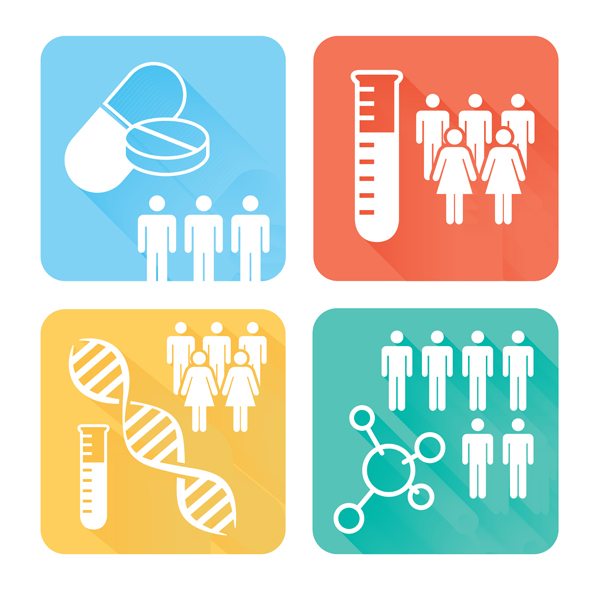
“Rare disease” may be the biggest misnomer in the pharmaceutical industry. Around the world, 350 million people live with conditions classified as rare because each afflicts a relatively small segment of the population. In the U.S., 30 million—nearly one in 10 Americans—suffer from one of about 7,000 known rare diseases.
As it applies to this population, “rare” most aptly describes the 400 or so drugs approved to treat these thousands of disorders. That most of these diseases lack a single approved therapy reflects the enormous cost associated with their development among other considerations, and the extremely poor odds of success: More than 90% of the compounds that reach clinical testing fail—and many more never get that far.
But with legislation encouraging innovation in this space, companies keep trying and 2015 was a landmark year for orphan drug development, with 21 compounds approved in the U.S. and 18 in the European Union. The pharma industry forecasts a 10.5% compound annual growth rate for rare disease products through 2020, and worldwide orphan drug sales are projected to reach almost 15% of the overall prescription market in 2016 versus less than 5% in 2000.
The government strongly encourages the trend. The FDA now receives orphan drug designation requests at a rate of more than one a day and has granted orphan status more than 3,600 times since 1983. However, with the number of approved compounds still numbering just dozens annually, there’s a long way to go—and patient advocates are stepping in and playing an expanding role in drug development and regulatory review.
An Advocacy Milestone
In a dramatic first for the agency, the FDA in 2015 issued draft guidance on developing drugs for Duchenne muscular dystrophy. The agency invited patients, parents, caregivers, clinicians, and other members of the Duchenne community to develop the initial guidance. Advocacy group Parent Project Muscular Dystrophy led the preparation of the document in 2014, and today it represents the agency’s current thinking on the topic. Never before had an external organization exerted such pronounced influence on U.S. government drug policy.
Parent Project Muscular Dystrophy certainly is not your typical patient advocacy group. With more than $6 million in annual revenues, it funds research, lobbies in Washington, and performs extensive education outreach. But its significant impact on the FDA’s approach to Duchenne is an encouraging signal to advocacy organizations large and small that seek a greater voice in drug development.
A couple of additional milestones: In 2001, the FDA began seeking patient input on early development of medicinal products, and 2012 saw the debut of the FDA Patient Network, a group of more than 200 patients, caregivers, patient advocates, and disease-specific advocacy organizations that facilitate patient engagement with agency decision-makers and teach people how new medications and medical devices move from concept to market.
The Greatest Impetus: FDASIA
Probably the greatest catalyst for expanding the work of patient advocates was the FDA Safety and Innovation Act of 2012. FDASIA, as it’s known, requires the agency to find ways to solicit patient views during development of medical products and to consider patient perspectives during regulatory deliberations. It also authorizes the FDA to collect user fees from industry to fund reviews of drugs, medical devices, and biosimilar biological products; promotes innovation to speed access to safe and effective products; and enhances the safety of the drug supply chain.
FDASIA mandated the institution of a five-year Patient-Focused Drug Development program to learn from patients about the impact of disease on their daily lives and convened numerous public meetings focused on specific disease areas. It also set up a public-private working group to gather input from a variety of stakeholders and experts to advise the FDA on creating a risk-based regulatory framework pertaining to health information technology.
About a year after FDASIA’s debut, the FDA formed a working group to address its goals of greater patient participation. The group gathered 185 comments from patients, advocacy groups, and industry trade organizations, and in January 2016, the agency issued a report summarizing the comments in five major categories:
- Listening to patients. Respondents want more systematic patient engagement, including creation of a central office to advise the FDA commissioner on patient engagement activities.
- Transparency and communication. They want regular reports on the outcome of the Patient Representative Program and more transparency about how patient input is evaluated and incorporated into agency decision-making.
- Clarification of FDA policies. Respondents recommended more straightforward policies to promote early interaction between the FDA and sponsors, and clearer guidance on interactions between patients and manufacturers to facilitate collaboration early in the R&D process.
- Alternative clinical investigation processes. Examples include expanded use of patient-centered and patient-reported outcomes on such measures as physical function and quality of life. Commenters also recommended shorter, hypothesis-driven trials to more quickly develop effective therapeutics.
- Workshops and partnerships. Respondents sought more gatherings to promote cooperation among patients, industry, clinicians, the scientific community, and the FDA.
With today’s environment so conducive to patient advocacy, the number of organizations has surged. The Rare Diseases Clinical Research Network lists 22 research consortia that together comprise more than 130 patient advocacy groups, along with a Data Management and Coordinating Center for collection, storage, and analysis of data from researchers who work across the rare disease spectrum. The group has worked with nearly 44,000 patients to date.
One of those 130-plus consortia, the Lysosomal Disease Network, alone consists of 35 organizations that specialize in various aspects of lysosomal storage disease and today are studying approximately 50 specific disorders. Such conditions are indeed rare, occurring in about one in 7,700 people and this network gives needed leverage to the patients and family members who experience their devastating consequences.
A Two-way Street
I’ve recently spoken with a number of these groups and found all to be deeply committed to their causes. Another common denominator: All view our relationship as a two-way street. The patients supplying us with data want to know how it’s being used, and they want insight into the end game. They want seats on advisory boards and committees and to be heard on topics such as trial design and execution.
Trade group BioNJ, representing biotech companies in New Jersey, observes that many biopharmaceutical companies have established patient advocacy functions within their corporate structures—recognizing that good relationships with advocates “foster relationships with patients, their caregivers, and the disease-specific nonprofit advocacy groups that support them. These interactions ensure (that) the voice of the patient is understood across every other function within the company, from R&D to commercialization.”
Indeed, pharma is way beyond treating an advocacy strategy as optional. Industry must engage with these groups up front and make clear exactly what we want and sometimes need from them—and what we’re able to or are willing to give back. These are very positive trends that are leading to highly productive dialogue that is advancing the cause of scientific discourse, and pharma companies are taking innovative steps to make the most of these relationships.








